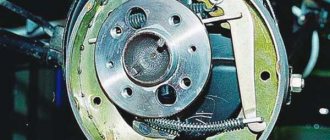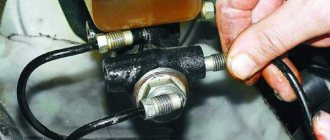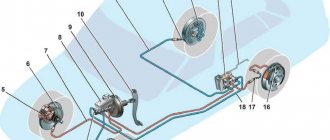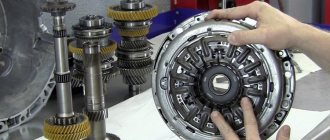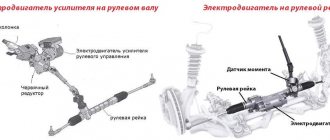Today, car safety is unthinkable without effective braking control, which, in accordance with the requirements of the EEC member countries, must consist of the following braking systems (TS):
- the main (working) one, which ensures the deceleration of a passenger car of at least 5.8 m/s2; moving at a speed of no more than 80 km/h with a pedal force of less than 50 kg;
- auxiliary (emergency), providing a deceleration of at least 2.75 m/s2;
- parking, which can be combined with emergency.
What is a braking system?
The braking system of a vehicle is a set of parts and mechanisms, the main purpose of which is to slow down the rotation of the wheels in the shortest possible time. Modern systems are equipped with electronic devices and mechanisms that stabilize the car during emergency braking or on an unstable road.
Such systems and mechanisms include, for example, ABS ( read about its structure here ) and differential (what it is and why it is needed in a car is described in another review ).
Who invented hydraulic brakes?
Hydraulic brakes were invented by Malcolm Loughead of Detroit, Michigan, USA in 1919. Above you can see his improved hydraulic brake system design - mid 1920s.
See also: Experiment with car brakes ended in explosion: Video
This system uses the momentum (driving force) of the vehicle to provide the necessary braking force to stop the vehicle. This force pushes the hydraulic piston in the cylinder. This is the world's first electrically operated brake. That is, when the brake pedal is pressed, the piston in the cylinder moves not only due to the force of pressing the pedal, but also due to the moving force of the vehicle.
Loughhead and his brother Allan were pioneers in aircraft manufacturing. They founded what is known as the Aircraft Manufacturing Enterprise.
A brief excursion into history
As soon as the wheel was invented, the question immediately arose: how to slow down its rotation and make this process as smooth as possible. The first brake mechanisms looked very primitive - a wooden block attached to a system of levers. Upon contact with the surface of the wheel, friction was created and the wheel stopped. The braking force depended on the physical characteristics of the driver - the harder the lever was pressed, the faster the vehicle stopped.
Over the course of many decades, the mechanism was refined: the block was covered with leather, its shape and position near the wheel were changed. In the early 1900s, the first development of an effective automobile brake appeared, although it was very noisy. A more improved version of the mechanism was proposed by Louis Renault in the same decade.
With the development of motorsport, significant adjustments were made to the braking system, as cars increased in power and, at the same time, speed. Already in the 50s of the twentieth century, the development of truly effective mechanisms appeared that ensure rapid deceleration of the wheels of sports vehicles.
At that time, the automotive world already had several options for different systems: drum, disc, shoe, belt, hydraulic, and friction. There were even electronic devices. Of course, all of these modern systems are very different from their first counterparts, and some are not used at all due to their impracticality and low reliability.
These days, the most reliable system is a disk one. Modern sports cars are equipped with large discs that work in tandem with wide brake pads, and their calipers have from two to 12 pistons. Speaking of the caliper: it has several modifications and different devices, but this is a topic for another review .
Budget cars are equipped with a combined braking system - discs are mounted on the front hubs, and drums are mounted on the rear wheels. Luxury and sports cars have disc brakes on all wheels.
Parking system
The parking brake system is mechanically driven, usually to the rear wheels. The parking brake lever is connected by a thin cable to the rear brake mechanisms, which contain a device that activates standard or additional (parking) pads. Adjustment of the parking brake is usually done with a cam on the brake mechanism, an adjusting nut on the rod of the device connecting the lever and the drive cable, or by changing the location of the lever inside the car.
The principle of operation of the braking system
The brake mechanisms are activated by pressing the pedal located between the clutch and gas pedals. The brakes operate hydraulically.

